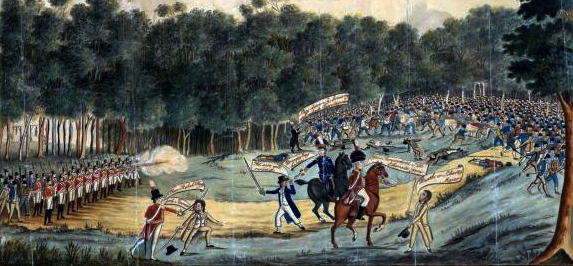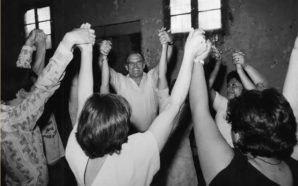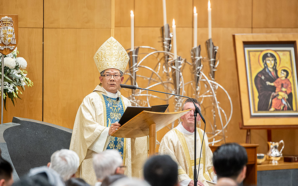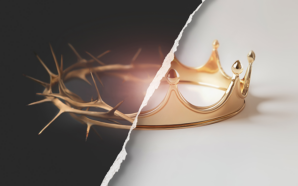By Jordan Grantham, Catholic Outlook
Fr James Dixon was a prisoner priest in the early Colony of New South Wales and said the first Mass sanctioned by the government.
The proclamation was read at Government House, Parramatta, and the first Mass was celebrated in Sydney on 15 May 1803.
Fr Dixon had been sentenced to death for alleged involvement in the Irish Rebellion of 1798, which was commuted to transportation for life. Two other Irish priests, Fr James Harold and Fr Peter O’Neil were also transported to the colony for alleged participation in the Rebellion.
Governor King gave Fr Dixon permission for the public to gather at the celebration of the Mass in 1803. This made Fr Dixon the first priest permitted by the Government to celebrate a public Mass in Australia.
Fr Dixon was the only priest available to minister and had been recognised by Governor King for “regular and exemplary conduct […] since his residence in this colony, and having taken the oath of allegiance, abjuration and declaration, prescribed by law”. Fr Neil had been found innocent and was preparing to return to Ireland. Fr Harold was being sent to the remote Norfolk Island.
The Mass rotated between Parramatta, Sydney and the Hawkesbury. The precise location of the Mass in Parramatta is unknown.
It is believed that prior to this permission, Fr Dixon and the others took the heroic action of ministering in secret, celebrating Mass and other sacraments for their fellow Irish Catholics.
In 1803, Fr Dixon wrote to the Vatican, seeking ecclesiastical permission to minister in the colony. He did not reveal his status as a convict, writing that he had been “brought by order of his Government” to the colony. Fr Dixon explained his request was delayed by the practical difficulties of communication from the colony. Pope Pius VII granted Fr Dixon faculties in 1804 and appointed him Prefect Apostolic.
In 1804, Irish Catholics lead the Castle Hill Rebellion with over 200 escaped convicts from a prison farm. This terrified many in the colony, leading to the declaration of martial law. Officials fled the area, including Anglican pastor and significant landholder, Rev Samuel Marsden.
Fr Dixon was brought by Government forces to persuade the rebels to lay down arms. His pleas were to no avail. Government forces then defeated the rebels at Rouse Hill. There is a memorial sculpture at Castlebrook Cemetery.
Fr Dixon lost favour with Governor King for the rebellion of his Irish spiritual sons. Governor King referred Fr Dixon as “that Romish priest Dixon” around the time he suspended Fr Dixon’s salary and withdrew permission for public gathering for Mass.
Fr Dixon was pardoned in 1809 on King George III’s birthday and returned to Ireland, where he ministered in parishes, including as parish priest as Crossabeg, where he had been arrested while serving as curate.
The Wexford Independent obituary in 1840 noted Fr Dixon’s holiness, never “to utter a word but Christian forgiveness towards his persecutors”.
Sources:
Dixon of Botany Bay: The Convict Priest from Wexford, (Strathfield: St Paul’s Publications), Vivienne Keely, 2003
“Dixon, James (1785-1840)”, Australian Dictionary of Biography, Volume 1, (MUP), 1966
“Regulations to be observed by the Rev. Mr. Dixon and the Catholic Congregations in this Colony”, The Sydney Gazette, April 24, 1803








